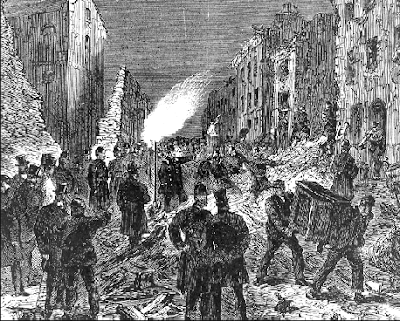
 Photos: BBC web site, submitted by viewers
Photos: BBC web site, submitted by viewersThe initial alarm was received at about 4:30 a.m. and smoke was visible across central London. The fire was under control about seven hours later.
"This was a complicated fire spreading rapidly through different premises and onto a bituemin covered roof, creating huge plumes of smoke across the city and presenting very difficult firefighting conditions for the crews attending," London Fire Commissioner Ron Dobson said.
"This incident yet again highlights the need for our fire safety work to prevent the fire risk and disruption these incidents have on our capital,” Dobson said.
The building housed a popular club, bar and restaurant - Sosho and the East Room.
Owner Jonathan Downey told The Evening Standard: "It's like one of those smart bombs has just landed on my organisation. Floors have collapsed, some walls are in danger of collapsing. Our head office was there."
INITIAL REPORT FROM THE SCENE04:32
F24 SHOREDITCH
20 PUMP FIRE PERSONS REPORTED, AERIALS 4
37219101
TABERNACLE STREET, EC2.
Range of buildings of 3,4,and 5 floors, 40 metres x 50 metres, 20 percent of 2nd floor, 20 percent of 3rd floor, 50 percent of roof alight, 3 jets, 1 ground monitor, 2 aerials, all breathing apparatus crews withdrawn, all persons not yet accounted for, tactical mode oscar.

 Photo: Daily Telegraph
Photo: Daily Telegraph













